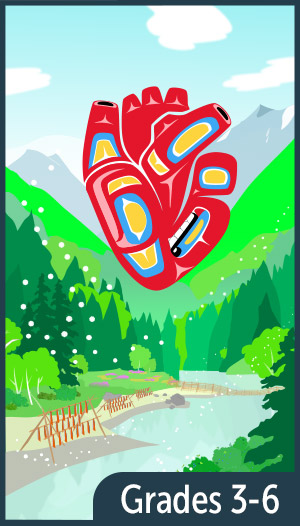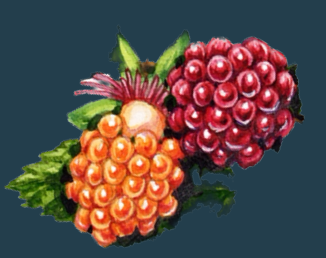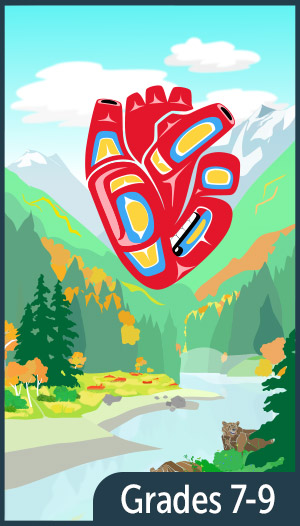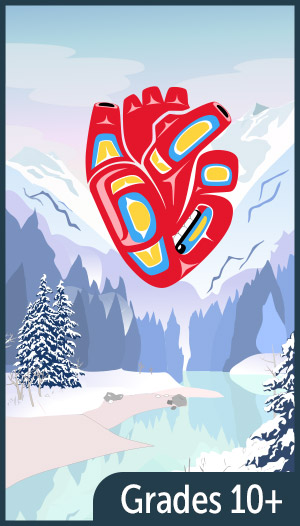Haa Shuká Tundatáani
wooch een haa daa.áxwx
Our Ancestors’ Tundatáani ties us all together
Welcome
How to use this website
This website has been created to support the education and success of students in southeast Alaska and beyond. Its methods embody the heart as a metaphor for the learning process and identifies resources to help support learning and development. The applications for this methodology are in: Evaluation, Curriculum, and Resources. The Evaluation Tool is an opportunity to find language and guidance for evaluating students, teachers, and the community. Curriculum is a means to navigate the GHF archive for curriculum content. Resources is a list of recommended and relevant resources for schools and families alike.
What is
Haa Shuká Tundatáani?
Haa Shuká Tundatáani represents a way of learning and understanding that connects us as people with the histories that have formed us, the knowledge we share today, and the world delivered by our future selves for future generations.
There is a term in Tlingit culture called “shuká” that, at its heart, can refer to the timelessness of our ancestors. Referring to both the ancestors who have passed and those that have yet to come. It is important for GHF learning practices and philosophies to center shuká in our curriculum because it will ingrain a sense of purpose in the learning of all students – especially letting indigenous students know that they have a place in the classroom and in the community.
Haa Shuká Tundatáani means our ancestors' ways of thinking, learning, and knowing.
This framework and website are designed around the heart at the center of existence, pumping what has existed before into what will exist in the future through the practice of listening, learning, and creation. This cycle of learning and belonging is in each of us and calls for being acknowledged and fostered by our surroundings and histories.
Artist and Author Recognition:
Gunalchéesh (thank you) to the Yanyeidi whose story guides the visual representation and philosophy behind the heart of our learning framework and its existence rooted in landscape. A special thanks to Koodéik’ Joseph Marks (Kaagwaantaan from Gaaw Hít in Tlákw Aan) for his guidance on this framework, and to S'igeidí éesh Delfine Decker (Yanyeidi from Ch'aal' Hít in T'aaku kwaan) for his artistic representation of the story and the heart.
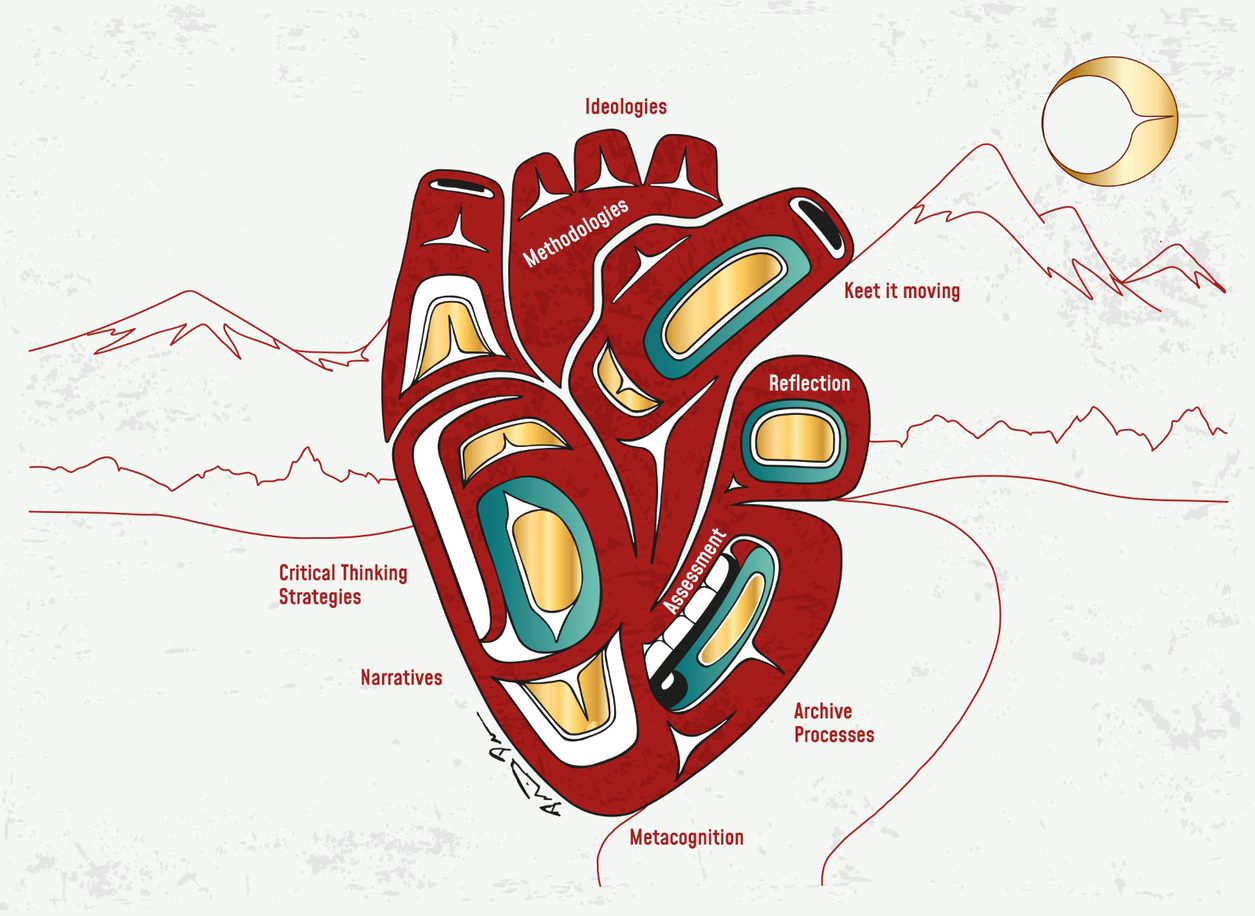
The heart analogy begins with the various teaching ideologies entering through the major arteries of the heart and passing through the subsequent chambers of the heart. In order, the chambers are critical thinking strategies, assessment, discernment, and reflection – Tlingit narratives surround and hold everything together like the walls of the heart.
What do we have to offer?
The HST curriculum page is a resource for classroom instruction and school curriculum development. Each HST unit shares links to relevant resources and content. This content is designed for both student learning and teacher accessibility. In partnership with grade levels, the HST curriculum is organized by season.
The HST template for all curriculum has several universal elements. These elements are the use of Tlingit language, prioritized methodologies, and the application of the Haa Shuká Tundatáani framework for learning. These elements ensure and guide proper integration of cultural values and language while providing a clear pathway for educators to meet their curriculum requirements. The application of the Tlingit language is central to the implementation. In this way, the use of the Tlingit language is accessible, vetted, and contextualized.
The second element is prioritized methodologies for ensuring thoughtful and engaging implementation. Here we want community and hands-on methods to be foundational to the implementation of curriculum. Finally, the application of the Haa Shuká Tundatáani framework provides the cyclical structure connecting prior knowledge and learning to instruction, and then instruction to learned knowledge as well as future thinking and understanding.
The designed context building creates purpose in the learning and helps learners build pathways to connection and to their learning. Being explicit about this process with the students allows them to feel and understand how their learning is created with love and care for their communities, identities, and futures.
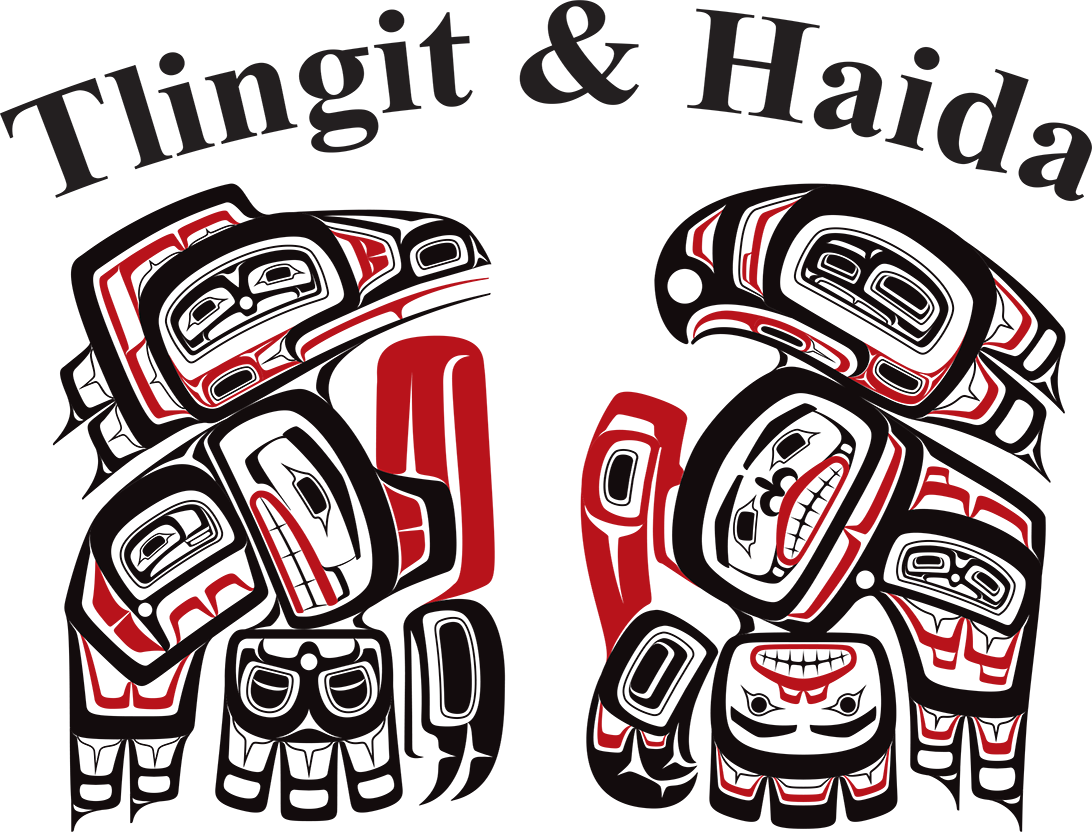

Embark on the traditional
Lingít journey of
Kuhaantí
Who we are
GHF’s Education Department has made it our mission to build and fortify our students’ connection to the Tlingit culture. In weaving Haa Shuká Tundatáani into curriculum and public schools, we will not only preserve our culture, language and customs- but also will foster students' ability to identify values, observe, comprehend abstraction, as well as purposely reflect on what they’ve learned.



